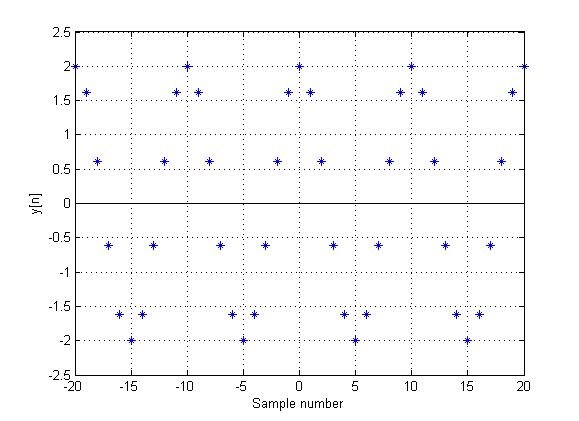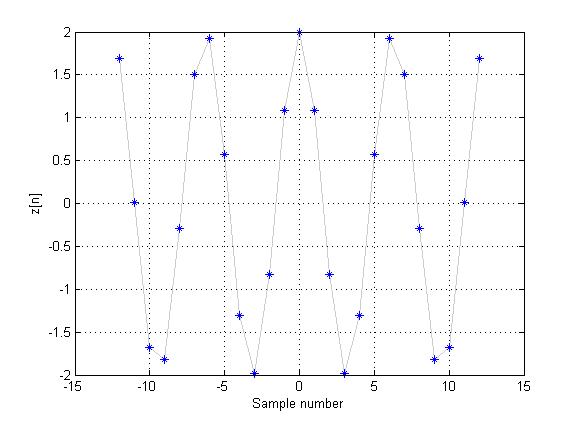(→Part 1) |
(→Part 1) |
||
| Line 34: | Line 34: | ||
<math>\,z[n]=x[\frac{n}{2\pi}]=2cos(n)\,</math> | <math>\,z[n]=x[\frac{n}{2\pi}]=2cos(n)\,</math> | ||
| − | Is not periodic in DT, since is no integer <math> | + | Is not periodic in DT, since is no integer <math>N\in Z</math> such that |
| − | <math>\,z[n]=z[n+ | + | <math>\,z[n]=z[n+N], \forall n\in Z\,</math> |
This can be seen in the following plot (notice how the values do not line up horizontally): | This can be seen in the following plot (notice how the values do not line up horizontally): | ||
Revision as of 12:52, 11 September 2008
Part 1
The function was chosen at random from HW1: HW1.4 Hang Zhang - Periodic vs Non-period Functions_ECE301Fall2008mboutin
$ \,x(t)=2cos(2\pi t)\, $
Periodic Signal in DT:
If $ x(t) $ is sampled at $ period=0.1 $, the function
$ \,y[n]=x[0.1n]=2cos(\frac{2\pi n}{10})\, $
is periodic, since
$ \,\exists N\in Z\, $ such that $ \,y[n]=y[n+N], \forall n\in Z\, $
$ \,2cos(\frac{2\pi n}{10})=2cos(\frac{2\pi n}{10}+\frac{2\pi N}{10})\, $
This is true when
$ \,\frac{2\pi N}{10}=2\pi \, $
$ \,N=10\, $
This can be seen in the following plot (notice how the values lines up horizontally):
Non-Periodic Signal in DT:
However, if $ x(t) $ is sampled at $ period=1/2\pi $, the function
$ \,z[n]=x[\frac{n}{2\pi}]=2cos(n)\, $
Is not periodic in DT, since is no integer $ N\in Z $ such that
$ \,z[n]=z[n+N], \forall n\in Z\, $
This can be seen in the following plot (notice how the values do not line up horizontally):



